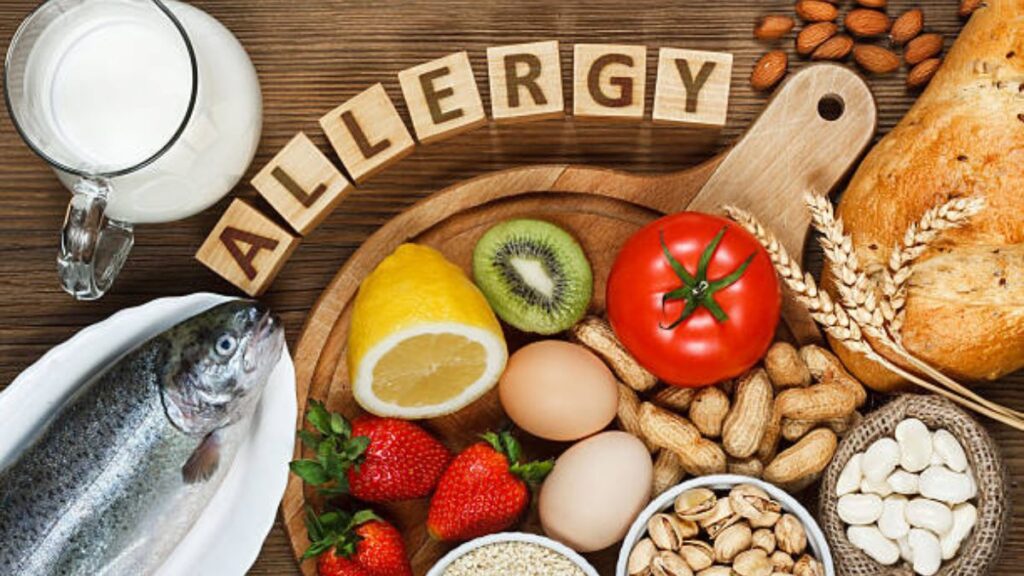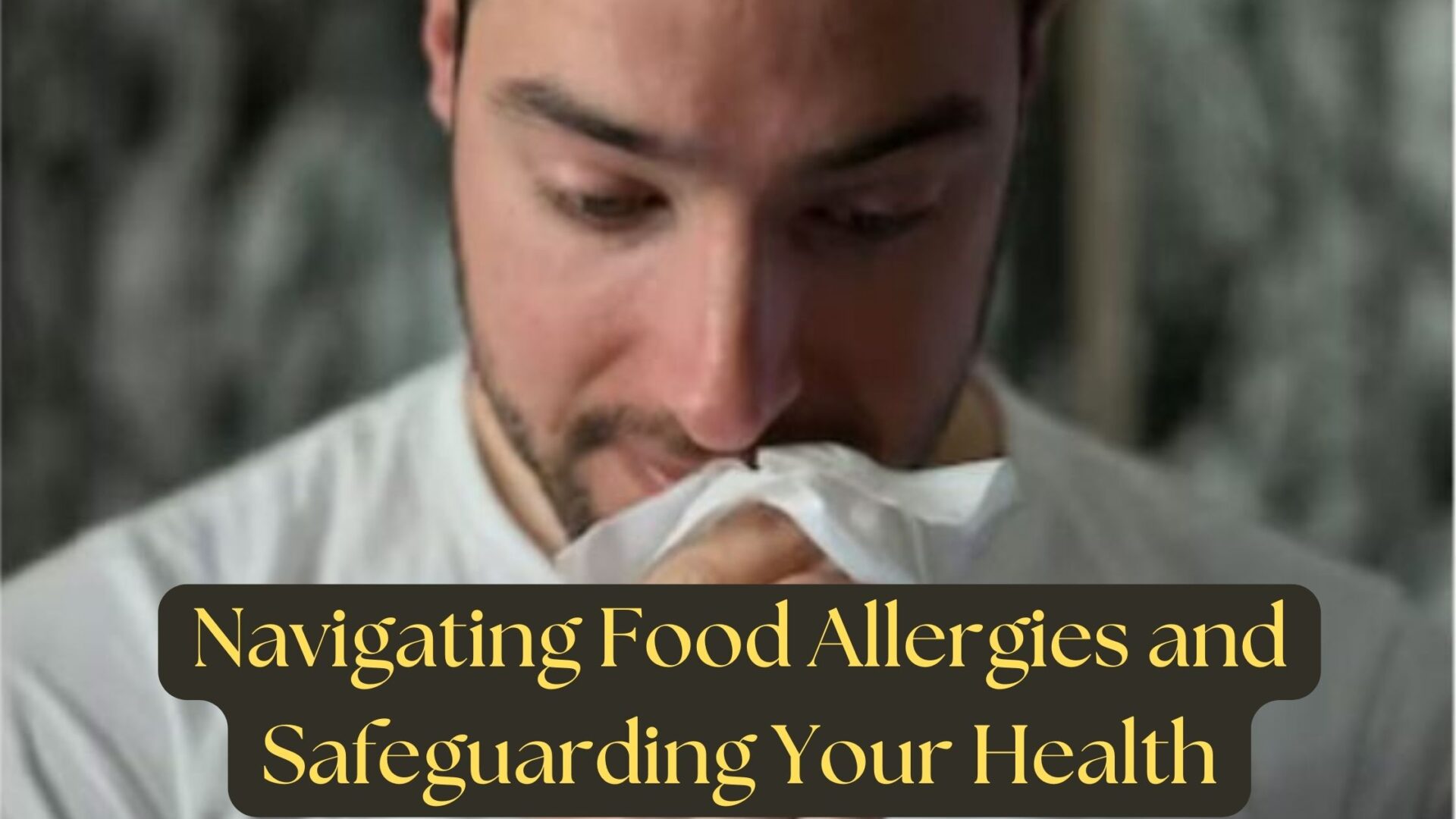Introduction:
Allergen Awareness: Navigating Food Allergies and Safeguarding Your Health

Food allergies have become a major concern affecting millions of people globally. To safeguard your health and that of loved ones, it is essential to understand allergen awareness. This article explores the prevalence of food allergies, common allergens, symptoms, and tips to navigate the complexities of food allergies. Learn how to protect yourself and promote allergen safety in your daily life.
Food Allergies and Safeguarding Your Health
Food allergies can vary from person to person, but some foods are known to cause allergic reactions more often than others. Here are the most common food allergens:
1. Peanuts: Peanuts can cause severe allergic reactions, including anaphylaxis.
2. Tree nuts: Almonds, walnuts, cashews, and pistachios can cause allergic reactions. People who are allergic to one type of tree nut are often allergic to others as well.
3. Milk: Cow’s milk allergy is common in young children. It is different from lactose intolerance, which is an inability to digest lactose, the sugar found in milk.
4. Eggs: Egg allergies are common in children but can be outgrown. The allergy is usually to the protein found in egg whites.
5. Wheat: Wheat allergy is more common in children and can be outgrown. It is different from gluten intolerance or celiac disease.
6. Soy: Soy allergies can occur in both children and adults. Soy products are common ingredients in many processed foods.
7. Fish: Allergies to fish, including both finned fish (such as salmon, tuna, and halibut) and shellfish (such as shrimp, crab, and lobster), are common.
8. Shellfish: Shellfish allergies are among the most common food allergies in adults. They can cause severe reactions and are generally lifelong allergies.
9. Sesame: Sesame allergies are becoming more recognized as a significant allergen. Sesame is often used in various forms, such as seeds, oil, and paste (tahini).
10. Sulfites: Sulfites are preservatives used in certain foods and beverages, such as wine, dried fruits, and some processed foods. They can trigger allergic reactions in sensitive individuals.
It’s important to note that this list is not exhaustive, and other foods can also cause allergies in some individuals. Also, it’s crucial to consult with a healthcare professional for proper diagnosis and management of food allergies.
What are the health risks of food allergies?
Food allergies can cause mild to severe health problems. Here are the risks:
1. Allergic Reactions: Symptoms can include hives, swelling, congestion, gastrointestinal discomfort, and respiratory issues.
2. Anaphylaxis: A life-threatening reaction that requires immediate medical attention.
3. Impaired Quality of Life: Can create anxiety and stress, limit social activities, and lead to feelings of isolation.
4. Nutritional Deficiencies: Avoiding certain foods can result in nutrient deficiencies.
5. Psychosocial Impact: Emotional and social implications, including bullying and stress.
How can you protect yourself from food allergies?

Protecting yourself from food allergies involves several simple steps:
1. Know your allergies: It’s important to know which foods you are allergic to. If you’re not sure, see an allergist for testing.
2. Read labels: Always read food labels carefully to find potential allergens. Food labels usually list common allergens like peanuts, tree nuts, milk, eggs, soy, wheat, fish, and shellfish.
3. Communicate when dining out: Let your server know about your food allergies when dining out. Ask about ingredients to make sure you can eat safely.
4. Be careful with cross-contamination: Cross-contamination happens when allergens touch other foods. To prevent this, make sure utensils, cutting boards, and cooking surfaces are thoroughly cleaned.
5. Carry medication: If you have a severe food allergy, carry an emergency medication like an epinephrine auto-injector (e.g., EpiPen) with you at all times. Make sure you and those close to you know how to use it.
6. Educate others: Tell your friends, family, and coworkers about your food allergies. They can help you and take necessary precautions when preparing or serving food.
7. Be cautious at social gatherings: Be careful at social gatherings where food is served. Ask hosts about the menu in advance and bring safe options if necessary.
8. Plan ahead when traveling: Research food options and allergen labeling practices at your destination before traveling. Pack safe snacks and consider bringing a translation card outlining your allergies in the local language.
9. Stay informed: Keep up-to-date with food allergy research and developments. New treatments and management strategies may be available over time.
10. Seek support: Join support groups or online communities for individuals with food allergies. They can provide you with valuable information, resources, and emotional support.
By following these steps, you can reduce the risk of accidental exposure to food allergens and better manage your food allergies.
Conclusion
By prioritizing allergen awareness and taking necessary precautions, you can navigate food allergies effectively and safeguard your health. Stay informed, communicate your allergen concerns, read labels diligently, and create safe environments at home, in restaurants, and in schools.
FAQs:
- What are common food allergens?
- Common food allergens include peanuts, tree nuts, milk, eggs, soy, wheat, fish, and shellfish. However, any food has the potential to cause an allergic reaction.
- How do I know if I have a food allergy?
- Symptoms of a food allergy can range from mild to severe and may include hives, itching, swelling, difficulty breathing, abdominal pain, vomiting, or anaphylaxis. Consult an allergist for testing if you suspect you have a food allergy.
- How can I prevent accidental exposure to food allergens?
- Preventing accidental exposure to food allergens involves reading labels carefully, communicating allergies when dining out, being cautious of cross-contact, carrying emergency medication, and educating others about your allergies.
- What should I do in case of a severe allergic reaction?
- If you experience symptoms of a severe allergic reaction (anaphylaxis), such as difficulty breathing or a drop in blood pressure, use an epinephrine auto-injector if available and seek emergency medical attention immediately.
- Can food allergies be outgrown?
- While some children may outgrow certain food allergies, such as those to milk, eggs, soy, and wheat, allergies to peanuts, tree nuts, fish, and shellfish tend to be lifelong. Regular follow-up with an allergist is necessary to monitor allergy status.
References:
- Sicherer, S. H., & Sampson, H. A. (2018). Food allergy: Epidemiology, pathogenesis, diagnosis, and treatment. Journal of Allergy and Clinical Immunology, 141(1), 41-58.
- Boyce, J. A., Assa’ad, A., Burks, A. W., Jones, S. M., Sampson, H. A., Wood, R. A., … & Cooper, S. F. (2010). Guidelines for the diagnosis and management of food allergy in the United States: report of the NIAID-sponsored expert panel. Journal of Allergy and Clinical Immunology, 126(6), S1-S58.
- Muraro, A., Werfel, T., Hoffmann-Sommergruber, K., Roberts, G., Beyer, K., Bindslev-Jensen, C., … & Zolkipli, Z. Q. (2014). EAACI food allergy and anaphylaxis guidelines: diagnosis and management of food allergy. Allergy, 69(8), 1008-1025.
- Sampson, H. A., Aceves, S., Bock, S. A., James, J., Jones, S., Lang, D., … & Spergel, J. (2011). Food allergy: a practice parameter update-2011. Journal of Allergy and Clinical Immunology, 128(3), 528-555.
- American College of Allergy, Asthma & Immunology. (2021). Food Allergy. Retrieved from https://acaai.org/allergies/types/food-allergy








